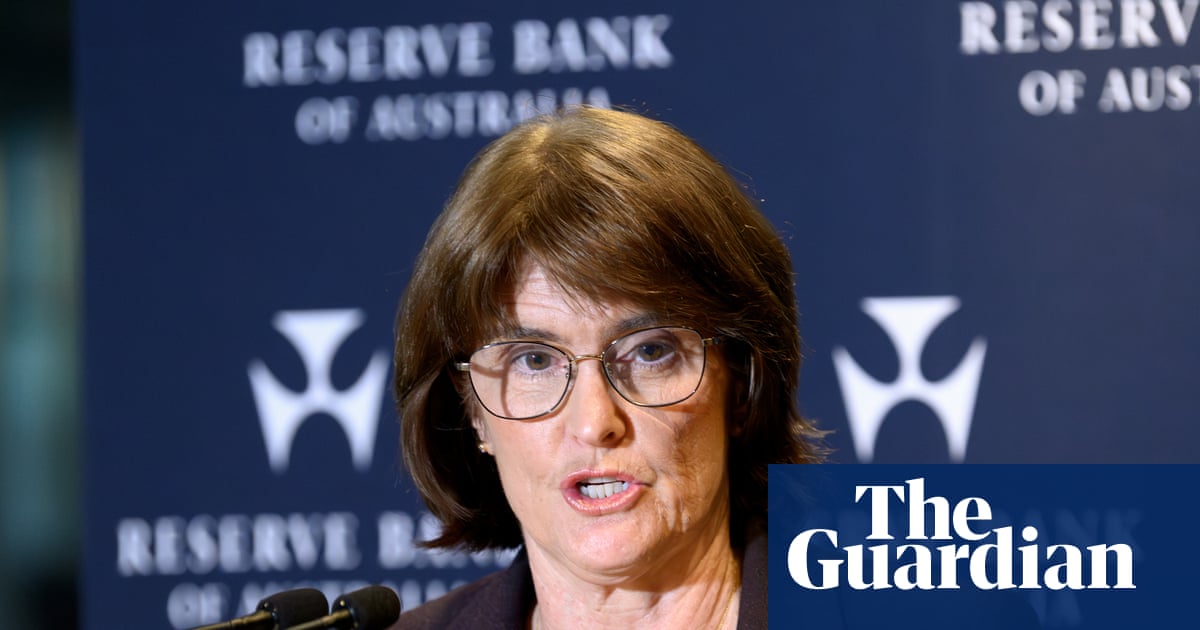The Reserve Bank is wary of cutting interest rates until it has gathered more evidence that inflation remains on a path back towards the 2.5% target the RBA governor, Michele Bullock, says as she defended the central bank’s slow and steady approach to monetary policy.
In a speech to the Anika Foundation in Sydney, Bullock also said the RBA was not targeting “a certain unemployment rate or number of job losses” in its pursuit of low and stable inflation.
Unions have harshly criticised the RBA’s reluctance to cut interest rates despite inflation dropping well below 3%, saying the surprise decision on 8 July to not offer further mortgage relief had been a “blow to workers”.
Sign up: AU Breaking News email
The treasurer, Jim Chalmers, has been more circumspect but still noted that “millions of Australians” would have been disappointed by the outcome.
But Bullock in her speech defended the bank’s record and its cautious approach, saying price pressures have been largely brought under control over the past two-and-a-half years without the significant rise in unemployment that has typically been the price of taming inflation.
The key jobless measure ticked up to 4.3% in June, but has held largely steady at 4-4.1% over the preceding 18 months. Inflation is at 2.4%.
Instead of job losses, the labour market has adjusted via Australians working fewer hours, voluntary job switching, and a drop in job vacancies, she said.
“Having your hours cut is tough, but it’s often preferable to losing a job altogether. And it’s worth noting that some of this decline in hours has been voluntary, especially over the past year or so.”
While it’s clear the RBA believes it will lower rates further this year, Bullock said the bank believed there was “still some tightness in the labour market”, and that the monetary policy board had become more concerned that consumer price growth was not falling as quickly as expected.
after newsletter promotion
“We still think it (the consumer price data) will show inflation declining slowly towards 2.5%, but we are looking for data to support this expectation.”
Bullock said the bank’s focus on keeping as many of the post-pandemic employment gains led to the board’s decision to raise rates more slowly than in other countries.
The flip side was that interest rates in Australia did not rise as high as they did in some other economies, and ”so we may not need to lower them as much on the way down”.
This lingering concern over inflation contributed to the monetary policy board’s surprise decision to hold the cash rate at 3.85% after its last meeting – although the decision had not been unanimous, after three of the nine board members voted in favour of a cut.
Confirmation that price pressures are still easing are expected to come as soon as next Wednesday with the release of the inflation report for the June quarter.
Financial markets and most economists at this stage are again predicting the cash rate will be lowered following the next policy board meeting on 11-12 August.
